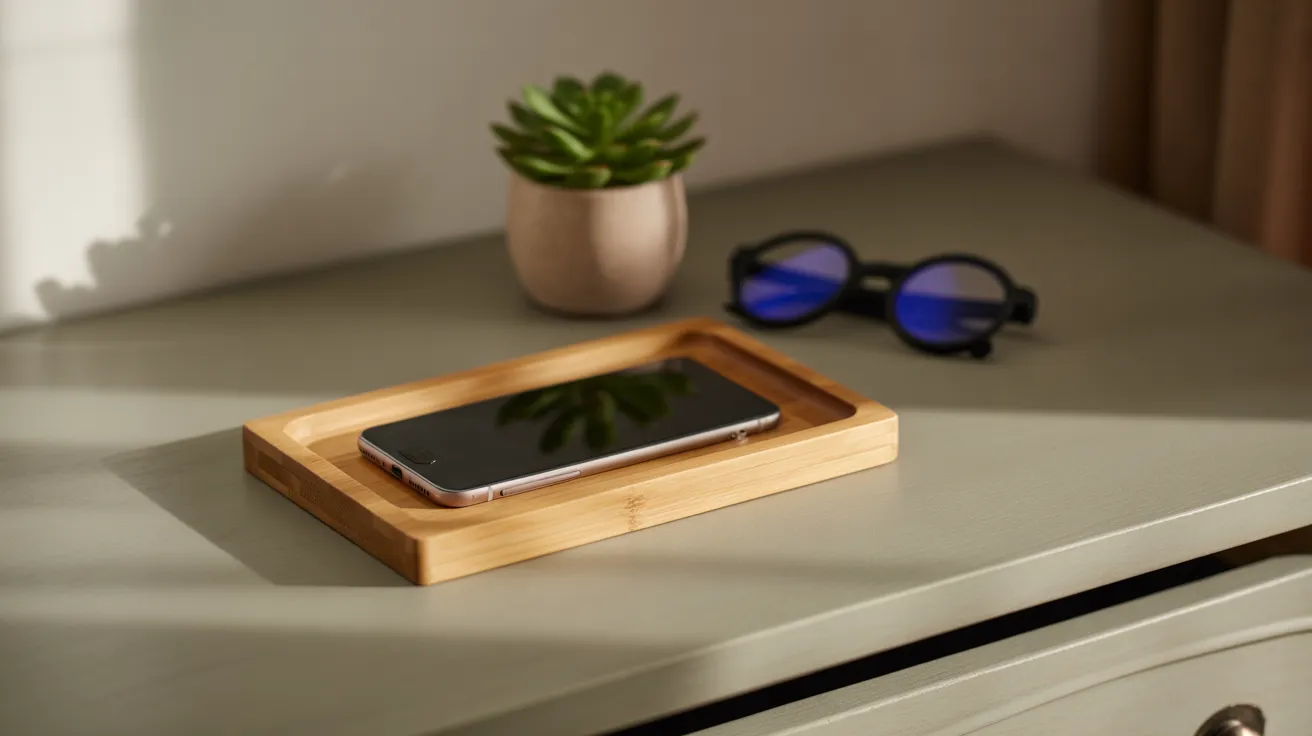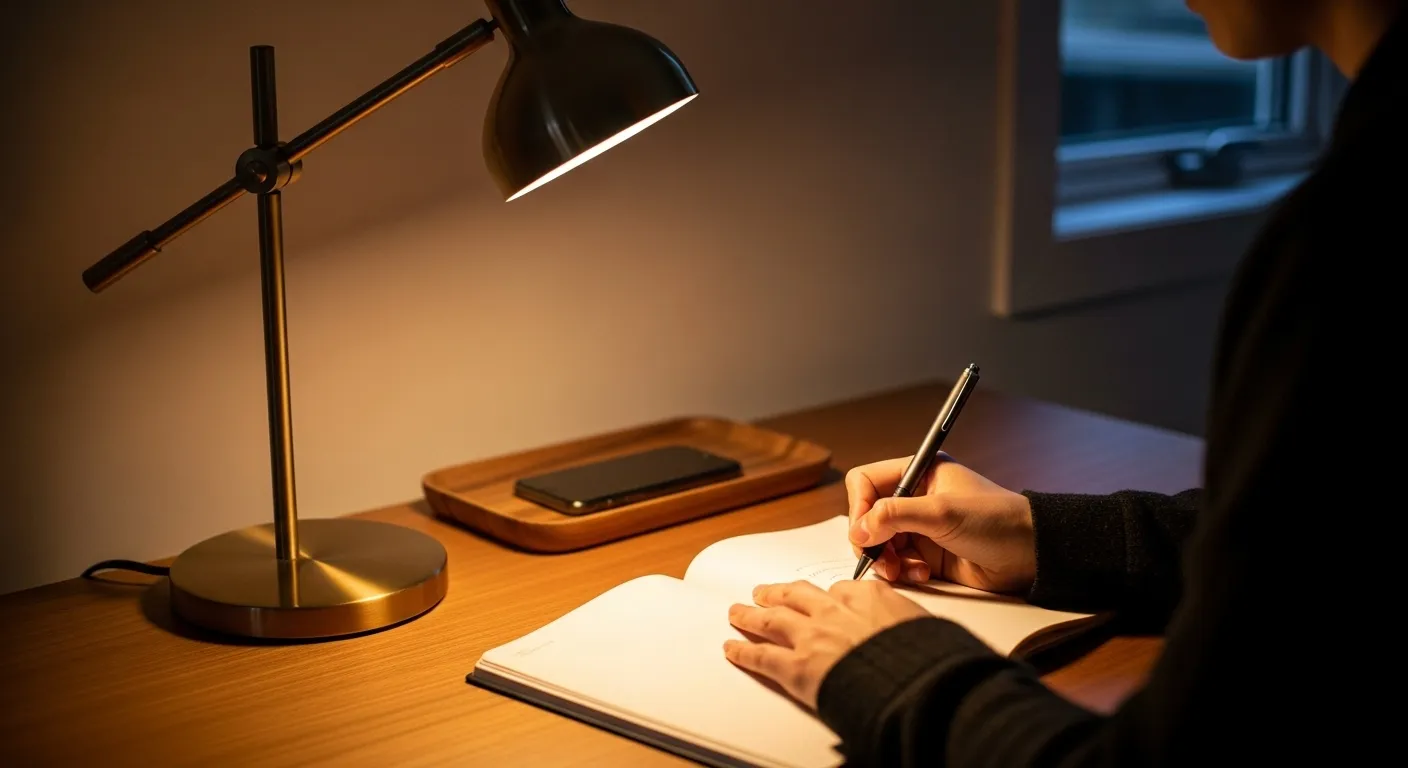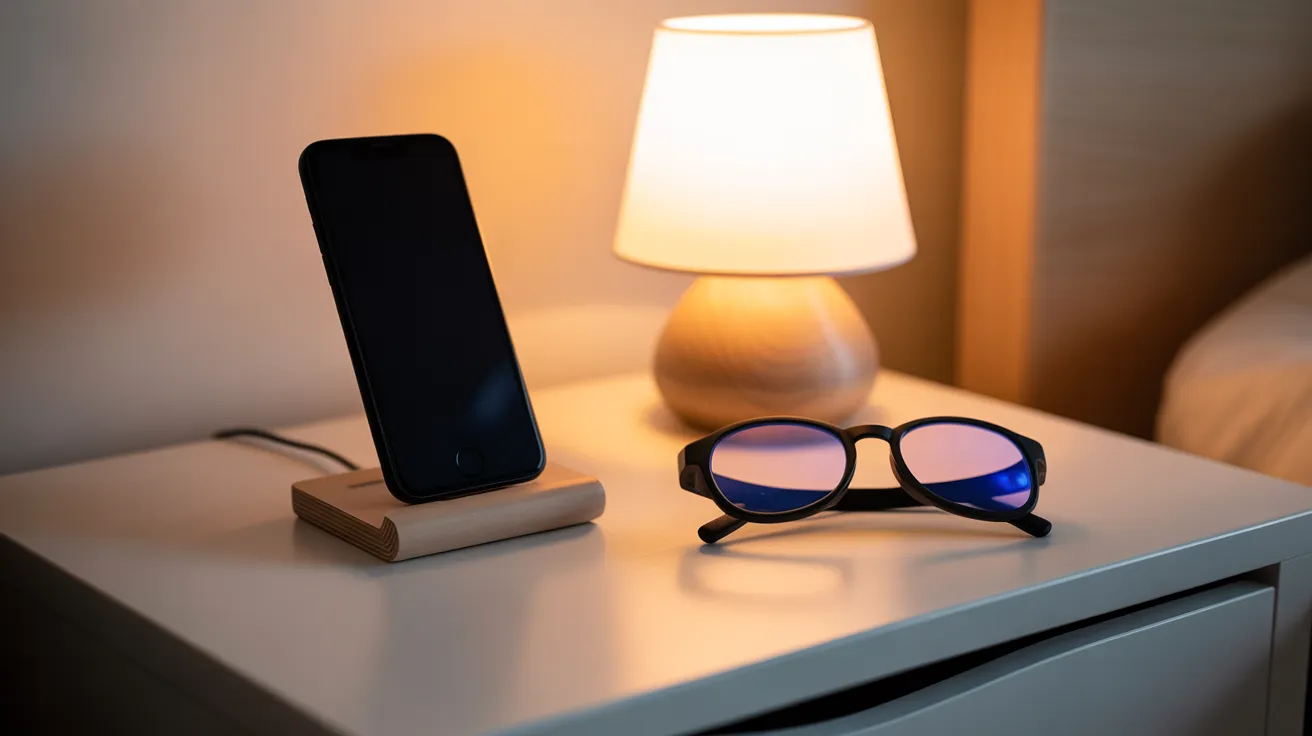
Do you ever reach the end of your day feeling both mentally exhausted and strangely unaccomplished? You were busy, your phone tells you, with hours of screen time logged. Yet, the important tasks on your to-do list remain untouched, and a subtle sense of unease lingers. You picked up your phone to check one quick thing, and an hour later, you emerge from a digital rabbit hole of trending videos, political debates, and curated glimpses into other people’s lives. You are not alone in this experience. It’s the quiet cost of constant, low-grade distraction.
The modern world runs on connection, and for many of us, social media is a primary channel for that connection. It helps us stay in touch with loved ones, discover new ideas, and participate in communities. The goal of this guide isn’t to convince you to delete your accounts, throw your smartphone away, and move off the grid. That approach is often unrealistic and unsustainable. Instead, we’re here to explore a more balanced, intentional path forward: a mindful social media cleanse.
Think of this not as a radical detox but as a gentle reset. It’s about clearing out the digital clutter, just as you would tidy a messy room. It’s about transforming your relationship with technology from a reactive, compulsive one to a conscious, controlled one. This guide will provide you with a step-by-step framework to reclaim your time, attention, and mental clarity, empowering you to use social media on your own terms, not on the terms dictated by an algorithm.
We will walk through understanding the psychological hooks that keep you scrolling, setting up digital and physical environments that support your focus, and creating sustainable routines that stick. This is your permission slip to build healthier tech boundaries and rediscover the peace that comes with being truly present.
📚 Table of Contents
- Understanding the Pull: The Psychology Behind the Scroll
- Building Your Mindful Tech Toolkit: Digital Routines and Setups
- Curate Your Focus with Custom Modes
- Master the Art of Notification Triage
- Design a Minimalist Home Screen
- Embrace App Timers for Awareness
- Creating Your Sanctuary: Physical Environments for Digital Wellness
- Putting It All Together: A 10-Minute Wind-Down and a Realistic Weekend Cleanse
- Navigating the Bumps: Handling Relapse, FOMO, and Social Expectations
- Handling Relapse Moments
- Dealing with FOMO (Fear of Missing Out)
- Managing Social and Professional Expectations
- Frequently Asked Questions About a Mindful Social Media Cleanse
- How does a social media cleanse affect my privacy?
- I work night shifts, and my schedule is inverted. How can I adapt the “digital sunset” idea?
- How can I apply these principles as a parent with kids who also use social media?
- My job requires me to be active on social media. How can I do a cleanse without risking my career?
- What’s the difference between a “social media detox” and a “mindful cleanse”?
- Your First Steps Toward a More Focused Life
Understanding the Pull: The Psychology Behind the Scroll
Before we can change our habits, it’s crucial to understand why they exist in the first place. Your struggle to put down your phone is not a sign of weak willpower or a personal failing. It’s a completely normal response to a digital environment that has been meticulously engineered to capture and hold your attention. Tech companies employ teams of psychologists and neuroscientists to make their platforms as engaging as possible, and they are remarkably good at it.
The primary mechanism at play is something called a dopamine loop. Dopamine is a neurotransmitter in your brain that is associated with pleasure, motivation, and reward. When you do something enjoyable, like eating a delicious meal or receiving a compliment, your brain releases a small hit of dopamine, which makes you feel good and encourages you to repeat the behavior. Social media apps have perfected the art of triggering this reward system.
Think about it: a notification pops up on your screen (the stimulus). You unlock your phone and open the app (the action). You see that someone has liked your photo or commented on your post (the reward). That little burst of validation feels good, and your brain logs it as a positive experience. This creates a powerful, self-reinforcing loop. The unpredictable nature of these rewards—you never know when you’ll get a like, a message, or see an interesting video—makes it even more compelling. It’s the same psychological principle that makes slot machines in Las Vegas so addictive.
This cycle is amplified by our modern, often urban, lifestyles. In moments of “in-between”—waiting for the train, standing in line for coffee, the 30 seconds before a meeting starts—we’ve trained ourselves to reach for our phones. Boredom, once a catalyst for daydreaming, problem-solving, or simply observing the world around us, has become a void to be filled instantly with a scroll. This constant stream of information prevents our brains from entering a more restful, reflective state. For more on the science of behavior and mental processes, the American Psychological Association offers a wealth of resources.
The human brain is also wired for social connection and validation. Social media platforms tap directly into this fundamental need. We see carefully curated highlight reels of others’ lives, which can trigger social comparison and a fear of missing out (FOMO). This isn’t just an abstract concept; it can have tangible effects on our well-being and mental health, a topic extensively researched by institutions like the National Institutes of Health. Understanding this design is the first step toward liberation. It allows you to approach your habits with compassion and recognize that you are pushing back against a powerful, deliberate system.

Building Your Mindful Tech Toolkit: Digital Routines and Setups
Reclaiming your attention requires more than just good intentions; it requires a practical strategy. The goal is to introduce intentional friction, making it slightly harder to fall into mindless scrolling and easier to use your devices for their intended purpose. Your smartphone is a powerful tool, and with a few adjustments to its settings, you can transform it from a source of distraction into an asset for focus.
Curate Your Focus with Custom Modes
Most modern smartphones have powerful features designed to help you manage distractions. On iOS, this is called “Focus,” and on Android, it’s often part of “Digital Wellbeing.” Instead of having one default mode for your phone, create several customized modes for different contexts of your life. For example:
Work Focus: This mode would silence all notifications except for calls from key colleagues or family members and alerts from essential work apps like Slack or your calendar. You can even set it to display a custom home screen that only shows your work-related apps.
Personal Focus: Activated after work hours, this mode might allow notifications from messaging apps and friends, while keeping work-related alerts silenced. This helps you create a clear boundary between your professional and personal life.
Wind-Down Focus: An hour or two before bed, this mode could silence everything except for emergency contacts. The goal is to create a calm, interruption-free environment to help you relax and prepare for sleep.
Master the Art of Notification Triage
Notifications are the primary gateway to distraction. Each buzz or ping is an invitation to stop what you’re doing and look at your phone. A crucial step in any mindful social media cleanse is to perform a notification audit. Go into your phone’s settings and ruthlessly disable notifications for every app that is not absolutely essential. Social media apps, news apps, and shopping apps rarely provide information that requires your immediate attention. Be honest with yourself: does a “like” on your photo from three days ago really need to interrupt your focus? Probably not. Keep notifications on for direct messages from people, calendar alerts, and perhaps a ride-sharing or delivery app when you’re actively using it. Everything else can go.
For the notifications you do keep, consider a technique called notification batching. This is the practice of checking your non-urgent notifications at predetermined times, rather than responding to them as they arrive. For example, you might decide to check your emails and less-critical app alerts only at noon and 4 PM. This puts you in control of the information flow, allowing you to engage with it on your schedule, not the app’s.
Design a Minimalist Home Screen
Your home screen is the digital lobby to your life. If it’s cluttered with bright, tempting app icons, you’re more likely to get sidetracked. Redesign your home screen to be a functional tool, not a casino floor. Move all your social media, entertainment, and news apps off the main screen. Tuck them away into a folder on the second or third page. This simple act of adding an extra swipe or two to access them creates just enough friction to make you pause and ask, “Do I really want to open this right now?”
Reserve your primary home screen for utility-based apps: your calendar, notes, maps, camera, and phone. Some people even go a step further and set their phone’s display to grayscale, which makes the colorful app icons far less visually appealing and stimulating.
Embrace App Timers for Awareness
Finally, use your phone’s built-in tools to set daily time limits for distracting apps. If you find you’re losing an hour to Instagram every day, set a timer for 20 minutes. The goal here isn’t to punish yourself but to build awareness. When the “time’s up” notification appears, it serves as a gentle nudge, a moment to check in with yourself. You can always override it, but that simple interruption is often enough to break the spell of the scroll and prompt you to move on to something more fulfilling.

Creating Your Sanctuary: Physical Environments for Digital Wellness
Our digital habits are not formed in a vacuum; they are deeply intertwined with our physical surroundings. To build a healthier relationship with technology, we need to be as intentional about our spaces as we are about our phone settings. By creating environments that cue our brains for focus, relaxation, or connection, we make it easier for our desired behaviors to flourish.
Establish Screen-Free Zones
One of the most powerful changes you can make is to designate certain areas of your home as completely screen-free zones. This isn’t about deprivation; it’s about preserving the sanctity of spaces meant for other activities. The two most important zones to consider are the dinner table and the bedroom.
When phones are present at the dinner table, they create a state of “continuous partial attention.” Even if it’s just sitting face down, its presence signals that a part of our focus is elsewhere, ready to be pulled away at any moment. Banning screens from the table—whether you’re eating alone or with family—reclaims that time for mindful eating and genuine conversation. It allows you to savor your food and connect with the people around you without interruption.
The bedroom should be a sanctuary for rest and intimacy, but for many, it has become another office or entertainment hub. Making the bedroom a strict screen-free zone is a transformative step for your sleep quality and your relationships. Invest in an old-fashioned alarm clock and leave your phone to charge overnight in another room, like the kitchen or living room.
Cultivate a Sleep-Friendly Evening Routine
The science is clear: the light from our screens can significantly disrupt our sleep patterns. Specifically, the blue light emitted by phones, tablets, and computers suppresses the production of melatonin, the hormone that tells your body it’s time to sleep. According to experts at the Sleep Foundation, this can make it harder to fall asleep and reduce the quality of the rest you do get.
To counter this, create a “digital sunset.” This means putting all screens away at least 60 to 90 minutes before you intend to sleep. This buffer period gives your brain a chance to unwind and your body’s natural melatonin production to begin. What do you do during this time? Rediscover analog activities. Read a physical book, listen to calming music or a podcast, journal about your day, do some light stretching, or have a quiet conversation with a partner. This ritual not only improves your sleep but also provides a much-needed period of decompression from the day’s digital noise.
Design Cues for Deep Work
For those of us who work from home, the line between our professional and personal environments can become incredibly blurry. It’s easy for the distractions of home life to bleed into work time, and for work to bleed into our evenings. You can use your environment to create clear cues for focus.
When it’s time for deep, concentrated work, create a specific setup. Put your phone in another room or place it in a drawer. If you can’t do that, at least turn it face down and enable your “Work Focus” mode. Close all unnecessary tabs on your computer, especially those related to social media or personal email. You might even have a specific lamp you turn on or a particular type of music you play only when you are doing focused work. These small environmental rituals send a powerful signal to your brain: “It is now time to concentrate.” They help build a strong association between your physical space and a state of deep focus.

Putting It All Together: A 10-Minute Wind-Down and a Realistic Weekend Cleanse
Understanding the theory is one thing; putting it into practice is another. Abstract goals like “being more mindful” can feel overwhelming. To make this journey tangible, let’s walk through two concrete, actionable examples: a simple nightly routine and a balanced plan for a weekend social media cleanse.
The 10-Minute Evening Wind-Down
The end of the day is a critical time. It’s when our willpower is often at its lowest, making it easy to fall into a prolonged scrolling session that sabotages our sleep. This simple, 10-minute routine helps you end the day with intention and calm.
First, set a recurring alarm on your phone for 60 minutes before your desired bedtime. Label it “Digital Sunset” or “Time to Wind Down.” When this alarm goes off, it’s your non-negotiable cue to begin. Second, immediately enable your pre-configured “Sleep” or “Wind-Down” focus mode. This will silence incoming notifications and visually change your phone’s screen, signaling a shift. Third, plug your phone in to charge—across the room. It must be far enough away that you cannot reach it from your bed. This is the most important step. Finally, for the next 10 minutes (or longer, if you wish), engage in a screen-free activity. Tidy up your space, prepare your clothes for the next day, read a chapter of a book, or simply sit quietly. This small routine breaks the cycle of late-night scrolling and prepares your mind for restful sleep.
A Realistic Weekend Digital Cleanse Plan
A “digital detox” often sounds like an all-or-nothing ordeal that feels isolating and impractical. A “mindful cleanse,” on the other hand, is about reducing the noise, not eliminating the tool. It’s a chance to reset your baseline and notice how you feel with less digital input. Here is a realistic plan that prioritizes mindfulness over total abstinence:
- Friday Night: Set Your Intention. Before the weekend officially begins, decide what you want to get out of your cleanse. Is it to be more present with family? To finish a creative project? To simply feel less anxious? Announce your intention to close friends or family if you wish: “I’m trying to be on my phone less this weekend, so if you need me, please call!” Use your phone’s app timers to set strict limits (e.g., 15 minutes per day) for your most-used social media apps. For a bolder move, temporarily delete the one app that you find most draining. You can always reinstall it on Monday.
- Saturday Morning: Create an Analog Start. Resist the urge to check your phone the moment you wake up. Leave it on its charger and start your day with at least one analog activity. Make coffee, stretch, journal, read the newspaper, or go for a walk. Don’t engage with the digital world until after you’ve had breakfast. Keep your phone on Do Not Disturb (a feature that silences all alerts) through the morning.
- Saturday Afternoon: Utility Over Entertainment. Throughout the day, reframe your phone as a tool, not a toy. Use it for practical purposes: looking up a recipe, navigating to a park, or making a call to a friend. Consciously avoid opening social media apps out of boredom. If you feel the urge, pause and identify the feeling behind it. Are you bored? Lonely? Anxious? See if you can address that feeling in a different way. Call a friend instead of scrolling their feed. Go for a walk instead of watching videos.
- Sunday: Reflect and Re-engage Intentionally. As the weekend winds down, take a few moments to reflect. How did you feel with less digital noise? What did you notice about your habits or urges? When you decide to re-engage with social media, do it with purpose. Instead of an endless scroll, perhaps you’ll just check your direct messages to respond to friends or look at one specific creator’s page. This mindful re-entry helps you carry the lessons from your cleanse into the week ahead.

Navigating the Bumps: Handling Relapse, FOMO, and Social Expectations
Embarking on a mindful social media cleanse is a journey, not a destination. There will be moments of challenge, and it’s important to approach them with self-compassion rather than judgment. Building new habits is a process of two steps forward, one step back. Anticipating the common hurdles can help you navigate them more gracefully.
Handling Relapse Moments
You will have moments where you find yourself mindlessly scrolling, despite your best intentions. You’ll open an app out of pure muscle memory. You’ll blow past your app timer. This is not failure; it is data. When this happens, avoid the spiral of guilt. Instead, get curious. Ask yourself: What triggered this? Was I feeling bored, stressed, lonely, or anxious? Was I procrastinating on a difficult task?
Often, our compulsive tech use is a form of self-soothing or avoidance. By identifying the underlying feeling, you can start to find healthier ways to address it. If you’re lonely, maybe the answer is to call a friend. If you’re stressed, perhaps a five-minute walk or some deep breaths would be more restorative. Treat each “relapse” as a learning opportunity that shines a light on your internal state, and gently guide yourself back to your intended path.
Dealing with FOMO (Fear of Missing Out)
FOMO is a powerful emotion, a nagging anxiety that if you’re not constantly connected, you’re missing out on important news, inside jokes, or social events. Social media algorithms are designed to amplify this feeling. When you step back, you might worry that you’ll become irrelevant or be left out of the loop.
The antidote to FOMO is to actively cultivate JOMO—the Joy of Missing Out. Remind yourself of what you are gaining: mental clarity, deeper focus on your immediate surroundings, richer in-person connections, and time for hobbies that truly nourish you. Recognize that the vast majority of online “breaking news” and viral trends are ephemeral. The meaningful experiences you are creating in your real life—a focused work session, an uninterrupted dinner with family, a walk in nature—have a lasting value that far outweighs a fleeting digital moment.
Managing Social and Professional Expectations
One of the trickiest aspects of reducing your screen time is navigating the expectations of others. Friends, family, and even colleagues may be accustomed to your near-instantaneous replies. When you suddenly become less available, it can cause friction or misunderstanding.
The key here is proactive and clear communication. You don’t need to make a grand, dramatic announcement, but it can be helpful to let key people in your life know what you’re doing. A simple message like, “Hey, I’m trying to be more intentional with my phone use, so I might be slower to reply to texts. If anything is urgent, please feel free to call me,” can set expectations and reassure them that you’re not ignoring them.
It’s also about setting boundaries. You are not obligated to respond to every message or email the second it arrives. By modeling healthier communication habits, you may even inspire others to do the same. Remember that it’s perfectly reasonable to protect your time and attention. Your focus is one of your most valuable resources.

Frequently Asked Questions About a Mindful Social Media Cleanse
How does a social media cleanse affect my privacy?
This is an excellent question. Engaging in a mindful cleanse is a perfect opportunity to conduct a digital privacy check-up. As you become more intentional about which apps you use and why, you’re more likely to question the data they collect. Take a few minutes to go into the privacy settings of your most-used apps. Review what information you are sharing, such as your location, contacts, and activity on other websites. You might be surprised by the default settings. A cleanse helps you shift from being a passive user to an active, informed participant who is in control of their digital footprint.
I work night shifts, and my schedule is inverted. How can I adapt the “digital sunset” idea?
The principle of a “digital sunset” is not about the specific time on the clock but about the transition from an active, stimulated state to a restful one. The same rules apply, just adapted to your schedule. Your “sunset” is the 60-90 minute period before your bedtime, whether that’s at 9 AM or 9 PM. The key is to create a consistent wind-down ritual. This might involve using blackout curtains to signal to your body that it’s “night,” putting your phone on Do Not Disturb (DND), and engaging in calming, screen-free activities before you go to sleep. The goal remains the same: to give your brain a break from the stimulating blue light and constant information flow, allowing for better quality sleep, no matter when it happens.
How can I apply these principles as a parent with kids who also use social media?
Leading by example is the most powerful tool a parent has. Your children are more likely to adopt healthy tech habits if they see you modeling them. Start by implementing family-wide rules, like a “no phones at the dinner table” policy or a central charging station in the living room where all devices “sleep” at night. Frame these not as punishments, but as positive choices the family is making to be more present with one another. Use your phone’s parental controls as a collaborative tool. Set time limits together and use them as a starting point for conversations about why balance is important, rather than just a restrictive measure.
My job requires me to be active on social media. How can I do a cleanse without risking my career?
This is a common and valid concern. For many, social media is not just for leisure; it’s a professional tool. The key is to create firm boundaries between your professional and personal use. If possible, use different devices or different browser profiles (like Chrome’s “Profiles” feature) for work and personal accounts. This separation can reduce the temptation to drift from work tasks into personal scrolling. Schedule your social media work in focused blocks, just as you would any other task. During your “cleanse” periods, like evenings or weekends, commit to logging out of your work-related accounts completely. A cleanse for you might mean a strict moratorium on all personal scrolling, while still allowing for scheduled, purposeful work engagement.
What’s the difference between a “social media detox” and a “mindful cleanse”?
While the terms are often used interchangeably, we see a subtle but important distinction. A “detox” often implies a complete, cold-turkey removal of something toxic, which can feel extreme and set up a pass/fail mentality. A “cleanse,” as we frame it, is a more gentle and sustainable approach. It’s less about total abstinence and more about mindfully clearing out the clutter, re-evaluating what serves you, and resetting your habits. Think of it like tidying a room rather than moving out of the house. The goal of a cleanse is to build a long-term, healthier, and more intentional relationship with technology, not just to endure a temporary period of deprivation.

Your First Steps Toward a More Focused Life
We’ve covered the psychology that hooks us, the digital and physical strategies to reclaim our focus, and the mindset needed to navigate this journey with self-compassion. It can feel like a lot of information, but remember: progress, not perfection, is the goal. You don’t need to implement every single tip overnight. The path to a healthier relationship with technology is built one small, intentional choice at a time.
The true aim of a mindful social media cleanse isn’t to demonize technology, but to put it back in its rightful place: as a tool that serves your life, not a master that dictates it. It’s about creating space—space to think, to create, to connect with the people right in front of you, and to simply be present in your own life.
To get started, don’t try to do everything at once. Choose one or two small changes to implement this week. The momentum from these small wins will make bigger changes feel more achievable. Here are a few simple first steps you can take today:
1. Triage one app. Pick your most distracting social media app. Go into your settings right now and turn off all its notifications except for direct messages.
2. Redesign your home. Move that same app off your primary home screen. Tuck it away in a folder on the second page to create a moment of intentional friction.
3. Designate one sacred meal. Commit to eating one meal each day—breakfast, lunch, or dinner—with your phone completely out of sight and out of reach.
4. Create a 15-minute morning buffer. For the first 15 minutes after you wake up, do not touch your phone. Let your own thoughts, not a feed, be the first thing to occupy your mind.
Choose one. Start there. Notice how it feels. You have the power to reshape your habits and reclaim your most precious resources: your time and your attention. The focused life you want is waiting for you, one mindful choice at a time.
Disclaimer: The information provided in this article is for informational purposes only and is not intended as a substitute for professional medical or psychological advice, diagnosis, or treatment. Always seek the advice of your physician or other qualified health provider with any questions you may have regarding a medical or mental health condition.






